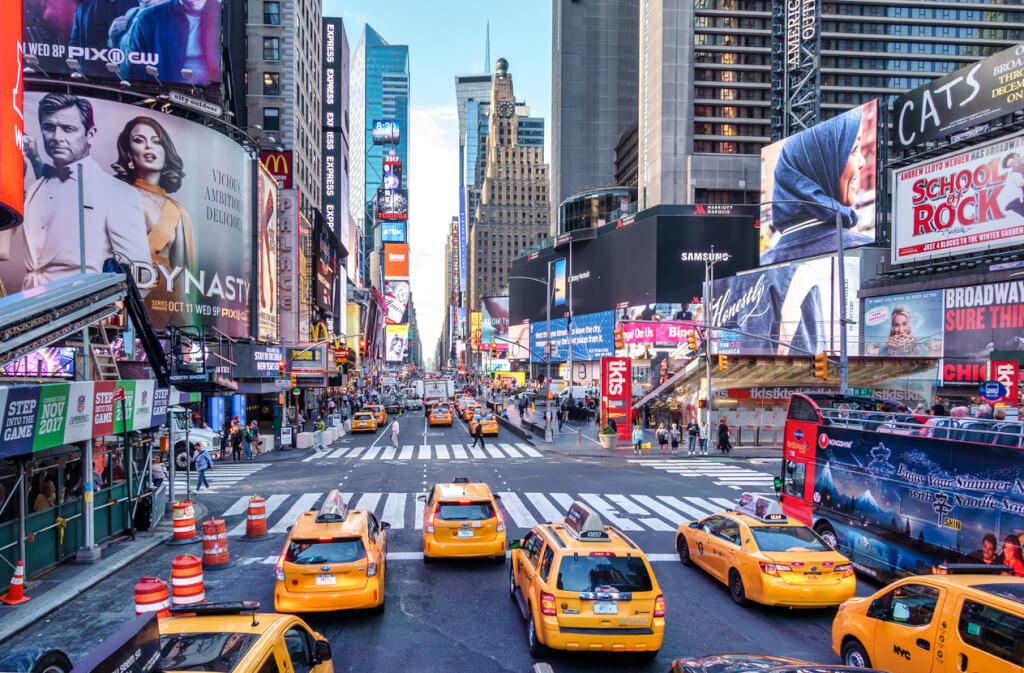No matter what they tell you, but the birthplace of Santa Claus in New York: it was here that he was invented
'06.12.2022'
Nurgul Sultanova-Chetin
New Yorkers have every right to claim that it was they who invented Santa Claus. After all, the people who described this fictional character in their works really lived in New York. It was here that his outfit and transport were first invented. And they even gave names to each deer in the cart. Who were the people who gave faith in magic to all the children of the planet, says Afisha nyc.
Santa was "brought" to America by the Dutch - Knickerbockers
New York was called New Amsterdam and was founded in the XNUMXth century. Dutch colonists settled here, bringing numerous European traditions with them to new lands. The Dutch took St. Nicholas with them, who became the patron saint of New York. And the modern Santa was already invented in the Big Apple.
Washington Irving coined the legend of the Knickerbockers and Santa. In 1809 he wrote A History of the Knickerbocker in New York under the pseudonym Didrich Knickerbocker. Saint Nicholas is central to the story. According to the book, the image of St.Nicholas was decorated with the first ship that brought the Dutch to Manhattan, and the saint watched the swim. He was "equipped with a low wide-brimmed hat, a huge pair of Flemish boots, and a long pipe."
Saint Nick, described in Irving's book, bears many similarities to modern Santa. The book describes how he "rides through the treetops in the same carriage in which he brings his annual gifts to the children." The people of New Amsterdam “are organizing a pious ceremony that is still strictly observed in all our ancient families: to hang a stocking in the chimney on the eve of St. Nicholas Day. You will always find such a stocking wonderfully filled in the morning. This is done in order to thank the good-natured old man for his contribution to the development of real estate.
There must be eight deer in the cart
The founder of the New York Historical Society, John Pintard, became interested in Santa in the 1800th century. He lobbied for the official declaration of St. Nicholas Day as a holiday. In the early 1810s, the New York Historical Society began to celebrate it. In 6, prominent New Yorkers gathered on December XNUMX, Saint's Day, to drink to Santa Claus. Many New Yorkers, including the writer Irving, took part in the festivities in honor of St. Nicholas.
Clement Clarke Moore - heir to one of the most famous New York families - the creator of modern Santa, in 1822 the first to describe him: "He was a plump and cheerful old elf."
Moore is actually a professor, he just wanted to cheer up his six kids when he first wrote The Night Before Christmas.
The book was called “the greatest work of genre painting English". It has become the standard for defining Santa Claus as we know him. The work notes for the first time that Santa rides on a sleigh (instead of a cart, as in The Knickerbocker Story) and has a "round belly ... like a bowl of jelly." Moore was also the first to establish the number and name of Santa's reindeer (eight). Here, for the first time, Santa wears clothes of a particular color, and it was yellow or more precisely gold, as it represented the richness of the Christmas holiday.
Children still learn the lines of Moore's work with pleasure:
The night before christmas
The old house is dozing peacefully.
Even a mouse won't rustle
White snow is a carpet.
A dashing reindeer team is rushing,
Beating the rhythm to the ringing of the bell.
The gray-haired merry fellow sits on a sled.
Saint Nicholas is in a hurry to visit us!
First depiction of Santa Claus
Cartoonist Thomas Nast first portrayed Santa as the fun-loving person we know. Created an iconic look at his desk at Harper's Weekly. He portrayed Santa Claus in a red suit, says Voljena.LiveJournal.
In the first half of the XNUMXth century, Santa appeared in all shapes and sizes as many artists tried to bring it to life. The German-born Nast based his image of Santa on Moore's descriptions and his own knowledge of German folklore. Nast gave Santa a white beard, black boots and a red suit - he was the first to design Santa's house in the North Pole and fill its toy factory with elves.
According to another legend, Nast copied Santa from himself. In Nast's drawings, Santa Claus wears a brown fur coat, which, thanks to the publishers of children's books, later turned into a red suit. True, initially his Santa was dressed in a sheepskin coat, reminiscent of the Stars and Stripes American flag, with a soldier's knapsack in his hands. But gradually all politics came to naught, and Santa became a truly festive figure. The final sketch was made by Nast in 1881.
List of obedient children and pranksters
It was Nast who portrayed Santa Claus bending over a huge book, where the columns contain the names of obedient boys and girls, as well as pranksters. And in the two-page spread of Harper Weekly, Santa Claus, in his home at the North Pole, gazes intently through a telescope at how children behave throughout the year. Before that, no one thought about the question of where this saint lives. However, given the interest in the mysterious North Pole, it was he who made Santa's residence. Nast introduced the tradition of sending letters to Santa.
Santa in advertising
Moore's poem inspired a Philadelphia businessman - a certain Parkinson - to do a great publicity stunt. In 1841, he dressed his actor friend in a fur suit and put him by the chimney on the roof of his shop. Santa's appearance and costume still varied back then. As an example, Parkinson used a drawing published in the same year in a New York newspaper. This Santa was more like a gnome, he had to get up on a chair to put gifts in children's stockings.
At the beginning of the XNUMXth century, people tried to improve the image of Santa, says Ichi... Illustrators JC Leyendecker and Norman Rockwell tried to offer the public a more humane Santa. They made people think he was not a fictional character. This was first seen in “Saturday Evening Post " with a poster that used Santa as a "celebrity" to endorse Coca Cola. Without a doubt, Coca Cola is the brand most associated with Christmas.
The first marketing campaign in which Santa Claus advertised Coca-Cola was titled "Thirst knows no season" and became quite famous in the 1920s, especially after the ban was in force at the time. The image of Santa Claus was again slightly altered in 1934 by illustrator Haddon Sundblom, who worked for the Coca-Cola Company. He made Santa look exactly like the Santa we see on Coca-Cola trucks every Christmas.








